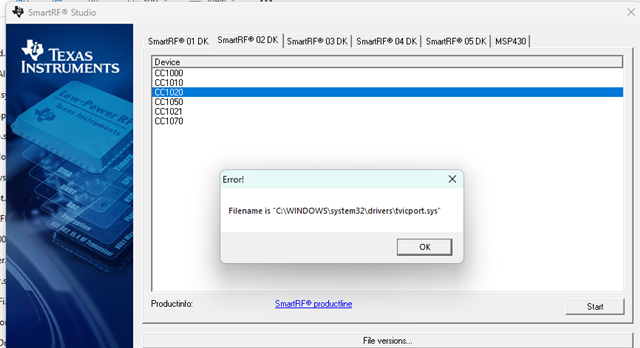Tool/software:
Hi,
I'm experiencing an issue while trying to install SmartRF Studio 6 to configure the CC1020 transceiver chipset. After installation, I encountered an error popup. I’ve attached an image for your reference.
I attempted the installation on a Windows 11 Pro system. Could you please assist in resolving this issue?
Thank you.

Thanks,
Surya


